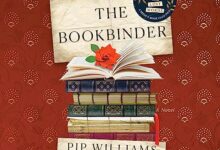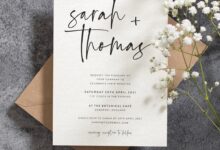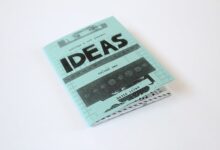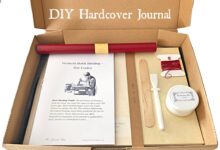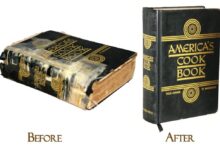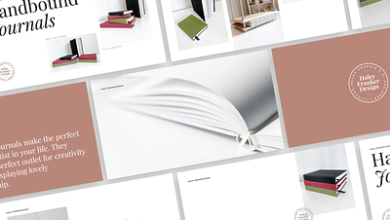Bookbinding for Students: Organizing and Binding Study Materials for Success
Contents
- 1 Introduction
- 2 1. Importance of Bookbinding
- 3 2. Spiral Binding
- 4 3. Comb Binding
- 5 4. Perfect Binding
- 6 Table: Bookbinding Techniques Comparison
- 7 Frequently Asked Questions (FAQs)
- 7.1 Q1: Is bookbinding suitable for all types of study materials?
- 7.2 Q2: Can I bind materials printed on both sides?
- 7.3 Q3: Is bookbinding an expensive process?
- 7.4 Q4: Can I bind materials that are already hole-punched?
- 7.5 Q5: Can I reuse the binding materials for multiple projects?
- 7.6 Q6: Is it possible to remove binding if I want to edit or discard the materials?
- 7.7 Q7: What’s the best way to store bound study materials?
- 7.8 Conclusion
Introduction
Hello Readers! Welcome to our comprehensive guide on bookbinding for students. In today’s fast-paced academic environment, effective organization and easy access to study materials are crucial for success. Bookbinding offers a practical and efficient solution to keep all your notes, papers, and textbooks in one place. By implementing bookbinding techniques, you can streamline your study routine and achieve better results. So let’s dive into the world of bookbinding and discover how it can help you excel in your academic journey.
1. Importance of Bookbinding
Properly organizing your study materials is essential for maximizing your learning potential. Bookbinding allows you to neatly compile all your resources in a structured and accessible format. With bound materials, you can easily locate information, review concepts, and revise for exams. By eliminating clutter and chaos, bookbinding provides a visually pleasing and efficient system that facilitates effective studying.
Moreover, having neatly bound study materials helps improve focus and concentration. When your materials are well-organized, you can dedicate more time to actually studying instead of wasting it searching for misplaced notes or flipping through endless loose papers. Bookbinding helps create a sense of order, allowing you to stay on track and make the most of your study sessions.
Additionally, bookbinding enhances the durability of your study materials. Loose sheets of paper are prone to damage and loss, making it difficult to preserve important information. By binding your materials, you protect them from wear and tear, ensuring their longevity. This is especially important for students who may refer back to their materials for future courses or exams.
Finding the right bookbinding technique can be a personal preference, and it is important to experiment with different methods to determine what works best for you. Whether it’s spiral binding, comb binding, or perfect binding, each technique offers unique advantages that cater to different needs and preferences. The key is to find a binding method that suits your study style and supports your organizational goals.
Despite the numerous benefits of bookbinding, there are also some limitations to consider. For instance, the cost of binding materials and equipment can be a barrier for students on a tight budget. Additionally, the binding process may be time-consuming, especially if you have a large volume of materials to bind. However, the benefits of bookbinding outweigh these challenges, and with careful planning and resource allocation, you can overcome them.
Now, let’s explore some popular bookbinding techniques that you can implement for organizing your study materials effectively:
2. Spiral Binding
Spiral binding is a widely used bookbinding technique that involves drilling holes along the left margin of your study materials and threading a plastic or metal coil through them. This binding method provides flexibility and allows easy flipping of pages, making it ideal for textbooks, lecture notes, and study guides.
Advantages of Spiral Binding:
i. Easy page-turning: With spiral binding, you can smoothly flip through pages, making it convenient for quick reference and note-taking during lectures or self-study sessions.
ii. Lay-flat design: Spiral binding allows your study materials to lay flat when opened, providing a seamless and comfortable studying experience.
iii. Customization: You can choose different coil colors and sizes to personalize your bookbinding, adding a touch of creativity to your study materials.
iv. Binding capacity: Spiral binding can accommodate a large number of pages, providing ample space for comprehensive study materials.
Disadvantages of Spiral Binding:
i. Prone to snagging: The coils of spiral binding may snag on other items in your bag, potentially causing damage or bending. It is essential to handle and store spiral-bound materials with care.
ii. Difficult to edit: Once your materials are spiral-bound, it becomes challenging to add or remove pages. Ensure you have finalized and proofread your content before proceeding with this binding method.
iii. Limited durability: Over time, the coils of spiral binding may become loose or deformed, impacting the overall durability of your materials. Regular maintenance and handling precautions are necessary to prolong their lifespan.
3. Comb Binding
Comb binding involves punching holes along the left edge of your study materials and inserting a plastic comb-shaped spine through them. This method provides a professional aesthetic and is commonly used for reports, dissertations, and thesis submissions.
Advantages of Comb Binding:
i. Easy customization: Comb binding allows you to easily add, remove, or replace pages in your bound materials. This is particularly beneficial when updating research papers or projects.
ii. Professional appearance: The sleek and uniform design of comb binding lends a polished and official look to your study materials, making a positive impression.
iii. Cost-effective: Comb binding is a budget-friendly option, as the materials required are affordable and readily available.
iv. Rebinding flexibility: In case of any errors or updates, comb-bound materials can be easily disassembled and rebound, saving you time and resources.
Disadvantages of Comb Binding:
i. Limited binding capacity: Comb binding works best for smaller volumes of materials. If you have a large number of pages, you may need to divide them into multiple volumes, which can be slightly inconvenient.
ii. Prone to damage: The plastic comb spine may be susceptible to bending or breaking if handled roughly. Take care when storing and transporting comb-bound materials to ensure their preservation.
4. Perfect Binding
Perfect binding involves gluing the left edges of your study materials with a strong adhesive. This creates a sleek, book-like appearance that is commonly used for paperbacks, novels, and conference proceedings.
Advantages of Perfect Binding:
i. Professional finish: Perfect binding provides a premium and professional appearance to your study materials, enhancing their overall aesthetic appeal.
ii. Easy readability: The flat spine created by perfect binding allows the materials to lie flat, ensuring convenient reading and note-taking.
iii. Wide availability: Perfect binding is a widely used technique and can be easily done at printing and copy centers according to your preferences and requirements.
iv. Customization options: You can choose from a variety of cover materials, colors, and print finishes to give your perfect-bound materials a personalized touch.
Disadvantages of Perfect Binding:
i. Limited editability: Once your materials are perfectly bound, adding or removing pages becomes challenging. Ensure all content is finalized before proceeding with this binding method.
ii. Durability concerns: The adhesive used in perfect binding may weaken over time, especially with heavy usage. It is important to handle and store perfect-bound materials with care to prolong their lifespan.
Table: Bookbinding Techniques Comparison
| Binding Technique | Advantages | Disadvantages |
|---|---|---|
| Spiral Binding | – Easy page-turning – Lay-flat design – Customization options – Ample binding capacity |
– Prone to snagging – Difficult to edit – Limited durability |
| Comb Binding | – Easy customization – Professional appearance – Cost-effective – Rebinding flexibility |
– Limited binding capacity – Prone to damage |
| Perfect Binding | – Professional finish – Easy readability – Wide availability – Customization options |
– Limited editability – Durability concerns |
Frequently Asked Questions (FAQs)
Q1: Is bookbinding suitable for all types of study materials?
A: While bookbinding can be used for various study materials, it may not be suitable for exceptionally large textbooks or materials that require frequent editing.
Q2: Can I bind materials printed on both sides?
A: Absolutely! Bookbinding techniques can accommodate double-sided printed pages, providing a comprehensive and organized solution.
Q3: Is bookbinding an expensive process?
A: The cost of bookbinding materials and services may vary depending on factors such as binding technique, volume of materials, and customization options. However, there are affordable options available.
Q4: Can I bind materials that are already hole-punched?
A: Yes, you can bind hole-punched pages using spiral or comb binding methods; however, it is important to ensure that the holes align properly for a secure and neat binding.
Q5: Can I reuse the binding materials for multiple projects?
A: In most cases, the binding materials can be reused for multiple projects as long as they are still in good condition and compatible with the binding method.
Q6: Is it possible to remove binding if I want to edit or discard the materials?
A: Depending on the binding technique, it may be possible to remove the binding and either edit the materials or discard them. However, some techniques may not allow for easy disassembly.
Q7: What’s the best way to store bound study materials?
A: It is recommended to store bound study materials in a protective folder or book cover to prevent damage and maintain their appearance. Keep them in a cool and dry place away from excessive heat, humidity, or direct sunlight.
Conclusion
By implementing bookbinding techniques, students can significantly improve their organizational skills and optimize their study routine. Whether it’s spiral binding, comb binding, or perfect binding, each method offers its unique advantages and customization options. While there may be some limitations associated with bookbinding, the benefits outweigh them, allowing for a streamlined and efficient learning experience.
Remember to carefully consider your study materials, preferences, and budget when choosing the appropriate binding technique. Additionally, take time to properly maintain and handle your bound materials to ensure their longevity. With bookbinding, you can transform your study materials into a professional and organized resource, setting yourself up for academic success.
So, what are you waiting for? Get started with bookbinding today and unlock the full potential of your study materials!
Disclaimer: The information provided in this article is for educational purposes only. The author and publisher of this article do not guarantee the accuracy, effectiveness, or suitability of any binding techniques mentioned. Before implementing any bookbinding method, please assess your personal circumstances and consult relevant professionals if necessary.
Originally posted 2023-08-20 02:39:59.
